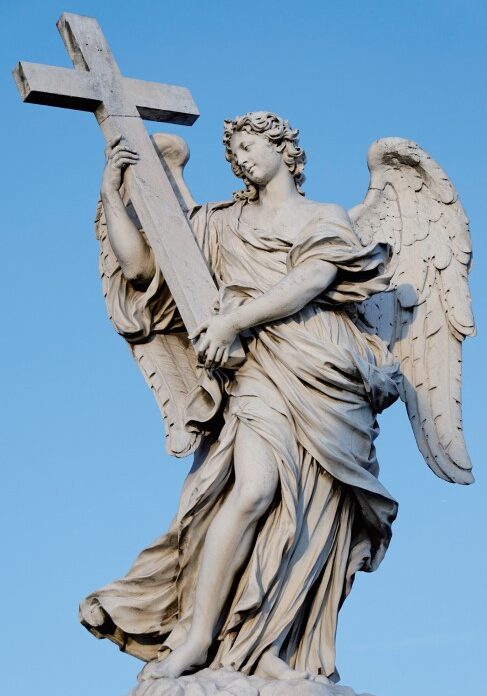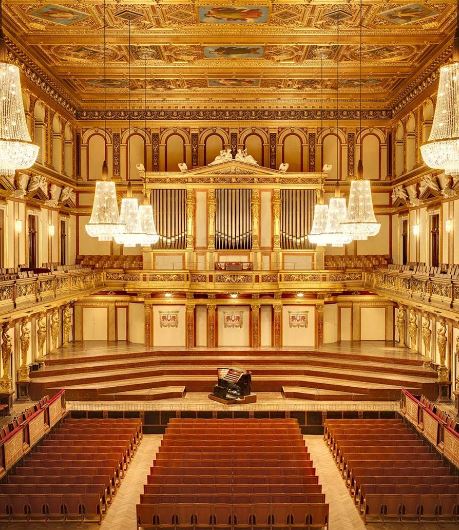ten angels holding instruments of the Passion
We've selected specific pieces by Giovanni Lorenzo Bernini. Giving the Concert hall a heaven and sacred like feeling with these large angel from historical bridge Ponte Sant'Angelo, originally the Aelian Bridge or Pons Aelius, is a Roman bridge in Rome, Italy.
For centuries after the 16th century, the bridge was used to expose the bodies of those executed in the nearby Piazza di Ponte, at the left bridge head. In 1669 Pope Clement IX commissioned replacements for the aging stucco angels by Raffaello da Montelupo, commissioned by Paul III. Bernini's program, one of his last large projects, called for ten angels holding instruments of the Passion: he personally only finished the two originals of the Angel with the Superscription "I.N.R.I." and the Angel with the Crown of Thorns, but these were kept by Clement IX for his own pleasure. They are now in the church of Sant'Andrea delle Fratte, also in Rome.
Enjoy the experience of each unique artistry. You'll also get to learn the history and origin behind each individual sculpture. Making your experience even more fascinating and interesting.
Angel with the Column

Angel with the whips

Angel with the crown

Angel with the Sudarium (Veronica's Veil)

Angel with the garment

Angel with the nails

Angel with the Cross

Angel with the lance

Angel with the Sponge

Angel with the Superscription

There are two other sculptures in the concert hall are The Pietà by Michelangelo Buonarroti and La Musique by Étienne Maurice Falconet
The Pietà by Michelangelo Buonarroti
The Pietà is a Carrara marble sculpture of Jesus and Mary at Mount Golgotha representing the "Sixth Sorrow" of the Virgin Mary by Michelangelo Buonarroti, in Saint Peter's Basilica, Vatican City.
The sculpture, in Carrara marble, was made for the cardinal's funeral monument, but was moved to its current location, the first chapel on the right as one enters the basilica, in the 18th century. It is the only piece Michelangelo ever signed.
This famous work of art depicts the body of Jesus on the lap of his mother Mary after the Crucifixion. The theme is of Northern origin. It is an important work as it balances the Renaissance ideals of classical beauty with naturalism.
Michelangelo di Lodovico Buonarroti Simoni was born March 6, 1475 and was an Italian sculptor, painter, architect and poet of the High Renaissance born in the Republic of Florence, who exerted an unparalleled influence on the development of Western art.

La Musique by Étienne Maurice Falconet
La Musique by Étienne Maurice Falconet is commissioned by Madame de Pompadour (1721-1764) for the Château de Bellevue. Marble block delivered on June 9, 1750 (AN, O/1/2091); plaster model presented at the Salon of 1751, no. 74. Sculpture placed in one of the niches of the château's vestibule, as a pendant to La Poésie by L.-S. Adam (see MR 1742). Seized during the Revolution. Inventoried in 1824 at the Château de Versailles. Brought to Saint-Cloud probably under Louis-Philippe. Catalogued in the Allée des Orangers in Saint-Cloud in 1845. Transferred to the Louvre on March 5, 1872. Restored (left hand redone) in 1875 by the sculptor Michel Pascal (1810-1882). Definitive attribution to the Louvre on March 27, 1876. Placed on deposit by decree of March 4, 1938 for the inauguration of the Hôtel de Rohan (National Archives). Returned to the Louvre Museum in September 1941, at the request of Marcel Aubert, curator of the Sculptures Department.


Concert hall
The Alberta Botanic Garden's Concert hall is designed to bring the art, nature and music together in one place. As large glass windows open up to the view of the world of nature you see large trees and plants from our French Garden. Sculptures of angels designing and creating a heavenly atmosphere together with the organ that's installed at the very end of the concert hall.
You emerge yourself into another dimension and world as you experience the music and performances that are presented at the concert hall.



Concert halls that are purpose-built usually have fixed seating (seats that cannot be moved). Some halls may have seats that can be moved, either by stacking them in small piles, or tiered seating that can fold up. This allows the hall to be used for other things, e.g. dancing.
Berlin Philharmonie was built in the 1980s in Berlin as a home for the Berlin Philharmonic Orchestra
A concert hall is usually a big hall: big enough for an orchestra to be on the stage. A small concert hall, designed for just a few performers (as in chamber music) may be called a “recital hall”.
Some concert halls are especially famous. In London there is the Royal Festival Hall on the banks of the river Thames, the Barbican Centre in the City (near St Paul’s Cathedral) and the Royal Albert Hall in Kensington which is used for other events as well. There is also a famous recital hall called the Wigmore Hall. New York has the Carnegie Hall, Vienna has the Vienna Musikverein with a beautiful hall called the Golden Hall where the famous New Year’s Day concerts are given. In Germany there is the Berliner Philharmonie in Berlin and the Gewandhaus in Leipzig. In Amsterdam there is the Concertgebouw (which means: "concert hall").
